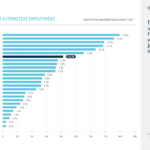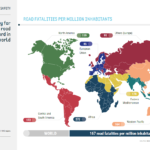In recent weeks there have been talk of “green shoots” appearing in the US economy. Ever since the market rebounded from the March lows, investors are looking for any sign that will confirm the theory that the economy is recovering from the worst recession since the great depression.
In order to check the current state of the US economy, I analyzed a few indicators.The following is a summary of my analysis.
1. Light Vehicle Sales: Sales picked up slightly in May compared to April. A total of 925,824 vehicles was sold with GM, Ford and Toyota reporting their highest sales so far this year. On an annualized basis this is equal to 9.91 million units. However this is well below on a year-over-year basis since this number was 14.26 million last May as the chart shows below. It is too early to tell if there is a recovery in auto sales. At best it is just stabilizing. For a meaningful rebound to occur, there has to a be a consistent increase in sales figures for a few months.
(Click to enlarge image)
2.Unemployment Rate: The unemployment rate continues to get worse since the beginning of last year. From 3Q,2008 the rate has been increasing month after month and reached 9.4 in May. As per the data by BLS, the number of unemployed persons stood at 14.5M at the end of last month. Michigan has the highest unemployment at 14.1%. Thirteen states have rates above 10%.Many believe the real unemployment rate is much higher than the official numbers. Shadowstats.com puts the rate at 20.5%. Today the White House spokesman Robert Gibbs said “the president expects the nation will reach 10 percent unemployment within the next few months”.
3. Delinquency Rate on Residential Mortgages and Credit Cards: This rate has been getting worse since last year.While pace of growth in residential mortgage delinquencies is increasing at an alarming rate, the rate on credit cards are following closely as well. In Q1 this year, the delinquency rate for credit card loans is nearly 6.5% and residential mortgages in nearly 8%. As unemployment level increases in the next few months this rate will get continue to go up as more consumers have difficulty paying monthly bills. The delinquency rate noted in the chart below is for all commercial US banks and the data is seasonally adjusted.
4.Debt Growth for Residential Mortgages and Consumer Loans: After growing for many years, this figure turned negative for the first time in 4Q,2008. Consumer loans growth contracted by 3.5% in Q1,2009 and residential mortgages had no change.All data is seasonally adjusted annualized rates. I chose to use this factor in my study since mortgages and consumer loans are an integral part of our economy.
5.Housing Starts: The housing market has been on a tailspin mode for many months now. The chart below shows that since January 2006, housing starts is declining steadily. Last month it was 532,000. This number is much lower than the same month’s number in 2008 and2007. Housing starts fell of a cliff last July but rose in May this year slightly compared to April. On related note, the latest issue of Business Week predicts “Home prices are likely to fall for the next year, then stabilize, with a rebound in 2012 as the overall economy takes off again” .
Data Source: The Federal Reserve and other federal agencies
From the above indicators, we can infer that it is too early to tell if the US economy is in recovery phase.Some sectors of the economy are stabilizing but most sectors are still hurting. I have used only a select few indicators in the above analysis. Many other factors such as retail sales, foreclosures, rail freight traffic, etc. can be included in an detailed study.



